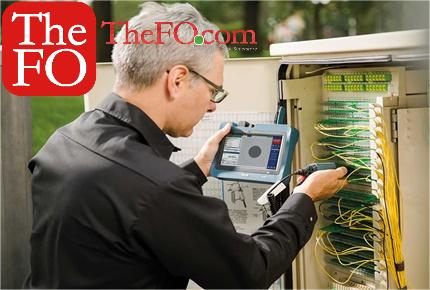-
When to use an OTDR or LTS
Categories: OTDRThis note explores the strengths & weaknesses of OTDRs and loss test sets, since they are often used in similar situations. A loss test set may be a light source and power meter pair, or an integrated OLTS.
-
How to Perform Bi-Direction Testing with an OTDR
Categories: OTDRInstallers and administrators of today’s fiber optic networks have access to different fiber infrastructure testers that provide the ability to measure optical loss as well as OTDR analysis. Debates continue to take place as to what testers do this better than others and what features are ‘must haves’. Whether short dead zones, fast signal analysis, ease of use, claimed accuracies or any other measurement parameter … if you are looking to make the best purchasing decision, it can be a difficult decision. A bad decision can mean much more than just losing out on the investment in the tester. It could mean downtime (or loss) of the corporate (or customers) network and possibly thousands of dollars of lost revenue, productivity or legal costs.
-
Why use launch cable in otdr?
Categories: OTDROTDR launch box, according to its function and working principle, has a lot of other names, like dead zone box, pulse suppressor, fiber ring, fiber optic launch cable, etc.
Optical time domain reflectometer (OTDR) is a necessary fiber optic testing tool which use light back-scattering technologies to analyze the optical fiber performance. It can test the light loss and locate the breaks, splices and connectors in fiber optic network. However, OTDR has "dead zone" which can affect the testing result if proper measure is not taken. To overcome the limitation of OTDR dead zone, OTDR launch box is being used. How can OTDR launch box minimize the effect of OTDR dead zone during fiber optic testing? The following explains the detail.
-
Relationship Between Dynamic Range & Dead Zones
Categories: OTDRFiber is going deeper everywhere as massive rollouts are laying the ground for 5G and IoT in today’s transforming telecom landscape. The promise of tomorrow’s technologies relies on an extremely reliable fiber foundation, whether in data centers, in the field or at customer premises. Verifying the integrity of the fiber optic cables with the right OTDR testing methods has never been more vital to be able to quickly identify and locate faults.
-
‘Ghost’ events in Optical Time Domain Reflectometer (OTDR)
Categories: OTDRSometimes an anomaly called ‘ghost’ event appears in an OTDR trace that can be confused with a real reflective event. This application note explains how to distinguish an OTDR ‘ghost’ from a real event and lists techniques to eliminate ghosts from OTDR traces.
-
-
Top 5 Best Mini OTDR On 2023 | Optical Time Domain Reflectometer
Categories: OTDRWith the rapid advancements in fiber optic technology and new fiber network deployments, OTDR testing methods have become indispensable for building, certifying, maintaining, and troubleshooting fiber optic systems.
An Optical Time Domain Reflectometer (OTDR) is an instrument used to measure and create a visual representation of a fiber optic cable route. The measurement data can provide information on the condition and performance of fibers, as well as any passive optical components along the cable path like connectors, splices, splitters and multiplexers.
Once this information has been captured, analyzed, and stored, it can be recalled as needed to evaluate the same cable over time.
-
How to caculate the OTDR testing distance?
Categories: OTDRWhen we purchase the OTDR, sometimes we meet the problem: how long this OTDR can test? Today, we share a tip to you.
-
HOW TO TEST A FIBER OPTIC SYSTEM WITH AN OTDR (OPTICAL TIME DOMAIN REFLECTOMER)
Categories: OTDRAn Optical Time Domain Reflectometer (OTDR) is a device that tests the integrity of a fiber cable and is used for the building, certifying, maintaining, and troubleshooting fiber optic systems. Hand-held OTDRs build a virtual image of the fiber optic cable to determine the condition and performance capability of the fiber cable. These tools can also test components along the cable path like connection points, bends, or splices to analyze the cable’s capability from start to finish.
-
What is acceptable dB loss for fiber?
An optical fiber cable run has been installed between two buildings, with a splice point in the middle linking a third building. It is now time to certify the link with a light source and power meter. The test equipment is set up to test at 850 nanometers. The source is connected to fiber 1 at the main crossconnect and the power meter at the intermediate crossconnect. The loss measured for this fiber span is 4.0 decibels. Is this attenuation acceptable?











